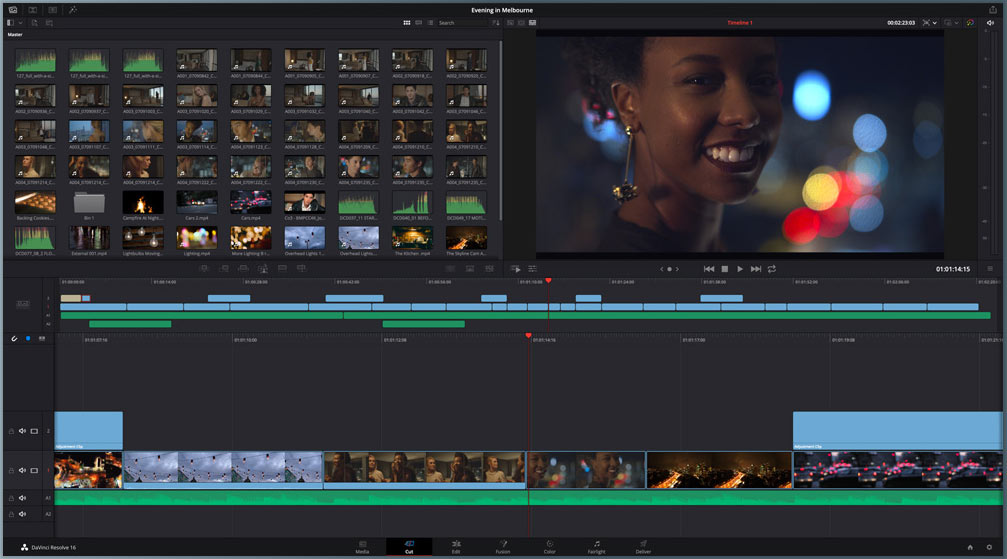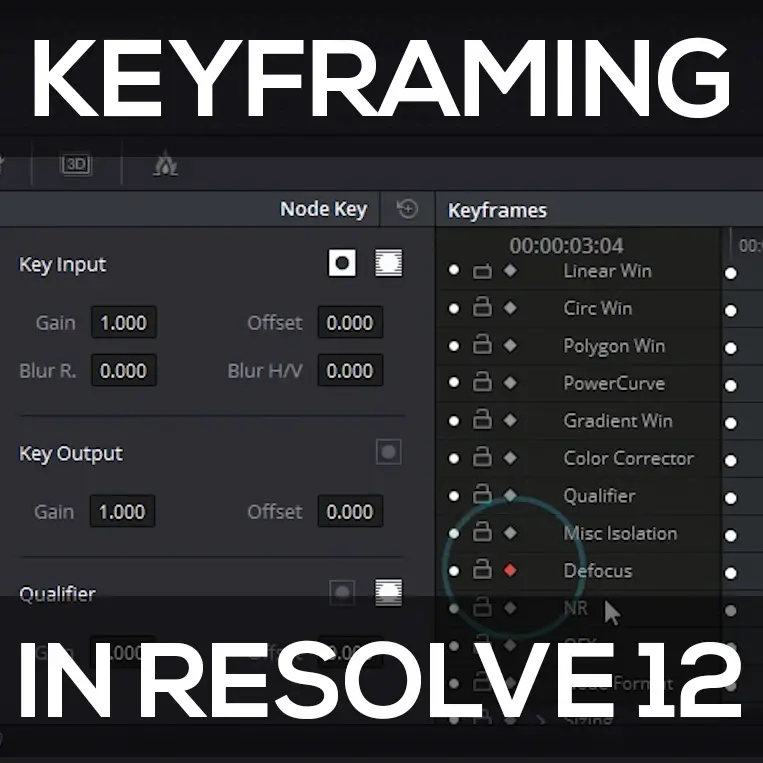
Think of it this way: with the render cache turned off, your GPU (or in your case the integrated Intel graphics) has to do all the work of processing effects every single time you play through clips on your timeline. Without render caching, some of the clips in my 23.98 fps timeline play back at 1 frame per second, especially if I’ve applied noise reduction. It renders certain processor-intensive effects (e.g., Fusion animations, noise reduction, titles, transitions, etc.) in the background so you can play back your timeline without it stuttering and dropping frames. The render cache is simply designed to speed playback, that’s all. You can definitely forget about using Fusion, and while you can accomplish basic primary and secondary color grades it won’t handle GPU-heavy tasks like noise reduction, deflicker, etc.
Keyframes in davinci resolve editing 1080p#
My test machine is a 2014 Mac Mini with i5 and 8 gigs of RAM, and while Resolve will run on it, it’s not practical for real work even with 1080p footage. The clip-based output cache provides the most control you pick and choose which clips will be render-cached.Īll of this will help in terms of real-time playback, but I saw in another thread that you’re thinking of buying an older MacBook Air, and I’m pretty sure Resolve 16 will be unusable on that machine, at least for anything beyond basic editing. The choices there are transitions, composites, and Fusion effects you can turn off any one of them if you know you don’t want transitions (for example) to ever be render-cached. The user render cache allows you to choose (in the Master Settings section of the Project Settings) which types of processor-intensive effects you want to render-cache. The smart render cache acts like FCPX’s background rendering: all processor-intensive effects (Fusion effects, titles, transitions, etc.) are rendered automatically.



You have several choices in Resolve: there’s a universal setting (i.e., applies to all clips) where you can choose no render cache, smart render cache, or user render cache, and you can also manually set specific clips to be render-cached using the render cache clip output or Fusion output. Yes, it’s basically the same but more sophisticated.


 0 kommentar(er)
0 kommentar(er)
